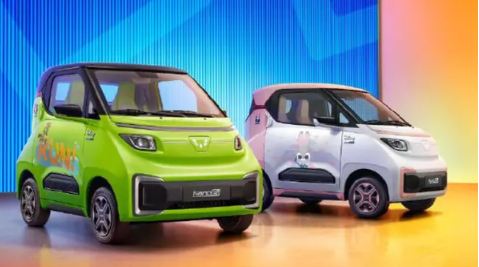The year was 2005 and Tata Motors announced that it will manufacture a car — a budget-friendly car for the lower middle class, which otherwise would have never harboured dreams of buying one. The idea was novel and Tata seemingly had its heart in the right place. However, what happened afterwards is a case study that is taught in marketing and PR schools across the globe.
Keeping aside the controversy of the Singur plant, the fact that Tata Nano could never really become a phenomenon it was projected to be, boiled down to its marketing. In a country, where cars are a status symbol, Tata failed to adjust its marketing pitch and became the cataclysmic disaster it is known today.
A cheap or an affordable car? — the dichotomy of Tata Nano
The car was tiny, slow, not the safest in crashes, and early examples had an unfortunate tendency to catch on fire. But all of those shortcomings could have likely been overcome or ignored if not for one unexpected fatal flaw: It was too cheap for its good.
In 2009, the much-anticipated car was launched in two variants: a basic model priced at Rs.1,12,735 and the luxury version costing Rs.1,70,335. Indians, and the world, were in awe. In American dollars, the car cost a mere $2500. In 2010, the Tata’s were able to sell 9000 units of their unique car.
In a year, however, Nano had lost its steam, selling a meagre 500 units in 2011. It became clear that Indians were not willing to buy a ‘cheap’ car. For the consumers, there was a difference between affordable and cheap. Unfortunately, Nano fit the bill for the latter. The production eventually came to a halt in 2019, when the losses became overbearing for the multinational company.
Read More: From “people’s car” to ZERO production in 2019, the road for Tata Nano comes to an end
Nano’s failure can be Tata’s code for success
However, what made Nano a trailblazing failure, can also be a tipping point for its success, if Tata is willing to take the risk. The future of the automobile sector is electric and Tata is going headfirst into the sector.
Reportedly, Tata Motors has its eyes firmly set on producing 50,000 EVs in the next fiscal year starting April. If it can deliver on the targets, the EV business could potentially generate revenue of Rs 5,000 crore for Tata Motors in FY23 itself.
According to an ET report, Tata has steadily increased the number of EVs sold in the pre-dominantly petrol, diesel in the Indian market. Tata Motors sold 350 EVs in FY19, which increased to 1,300 the following fiscal year and to 4,200 in FY21.
Its EV volume in the ongoing FY22 is expected to be 17,000-18,000 units. In the first nine months of FY22, Tata Motors sold around 10,000 EVs.
Read More: Choosing Tesla over TATA reeks off ‘White skin worship’ attitude of India’s opposition parties
The Chinese company has emulated Nano
Nano with its compact and slim design can be the perfect, affordable EV car for the masses. Chinese carmaker Wuling Hong Guang which disrupted the electronic vehicle market in China by selling 119,255 units in 2020 has come up with another model. Incidentally, the car is named Wuling Nano and has a distinctively similar look and feel as that of Tata Nano.

It is said to be the smallest electric car to go into production.
Thus, if a Chinese company can be inspired by an Indian product, what is stopping Tata from taking the leap of faith. After all, the market and the consumers of the country have matured.
Tata can reach its ambitious target with Nano EV
A better design, an efficient engine, and even a little higher cost will not bother the consumers. Anything under Rs 5 lakh and Nano EV could be the game-changer.
To reach the 50,000-car sales target, Tata needs the middle class to buy its cars in bulk. Both Nexon and Tigor EV currently cater to the upper-middle class, with their pricing hovering between the Rs 12-17 lakh range. It’s steep for the particular demography of the consumers that can drive the sales.
Tata Nano has the DNA, which can help it in succeeding in the EV market. However, it all boils down to the top brass at Tata if they are willing to use this ace or invest in the expensive R&D process to develop a new car from scratch.

































I think under 5 lakhs cannot be achieved with current batteries, but in future we are looking at launch of little cheaper battery , then maybe but even if it is around 6 lakh and range of near 200kms it should work. With due respect to Mr Tata it needs a new breezy name, i have a idea of the name which can be shared with the compa y seniors.
Tata should have following product portfolio
EV vehicles
Nano
Tigor
Nexon
One larger vehicle if demand is seen.
Cng
Tiago
Tigor
Altroz
Nexon
Diesel
Punch
Tigor
Altroz
Nexon
In between model
For taxi trade Sumo type vehicle is needed.
Harrier
Safari.
A MPV like Hexa.
In petrol
All cars listed above except nano, no nano with ICE.
Tata also needs a 1.50 litre petrol engine in its stable.
One segment which Tata has not been able to see needs a new car similar to one of their early produce but with some modern changes.
Also Gypsy was a no frills or should say a tin box capable of going off road, why cant Tata do something like that within 10lakhs, or relaunch XENON which was launched much ahead of times, similar size would mean easily crossing rs12 lakhs but if if kept within 13 lakhs it can compete with Isuzu and up coming Hi Lux.
Why does tata not use their 2.2 litre diesel engine which is BS6 complaint now.
Safari old shape with fly by shift 4×4 one model only within 16 lakhs should find volumes of 30000 per year.
Sorry for being so lengthy, it is just that people have woken up from.their stupor and now is the time for TATA to go for the no 2 and would love it to be no 1 in 5 years but dont see that since TATA will never make tin boxes masquerading as cars.
Tata means Steel. If Nano Electric has a strong steel body, Indian mass will go for it. Price tag under Rs 5 lacs can be attractive.
“TATA NENO ” I have CNG and it’s most economic car then even Activa used One lac k.m. It’s also more species my whole family loves NENO. For city it’s too best and comfort in driving.
Now EV NENO come this is my First choice.
When delivery start ?
Pl keep price in comfort zone for middle class.